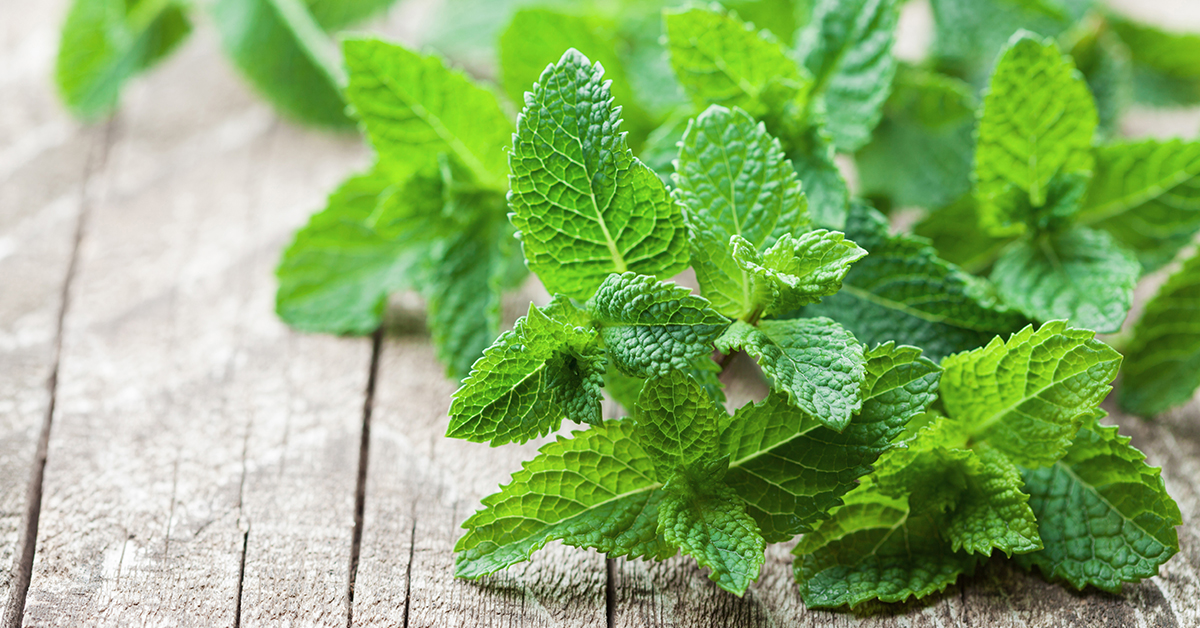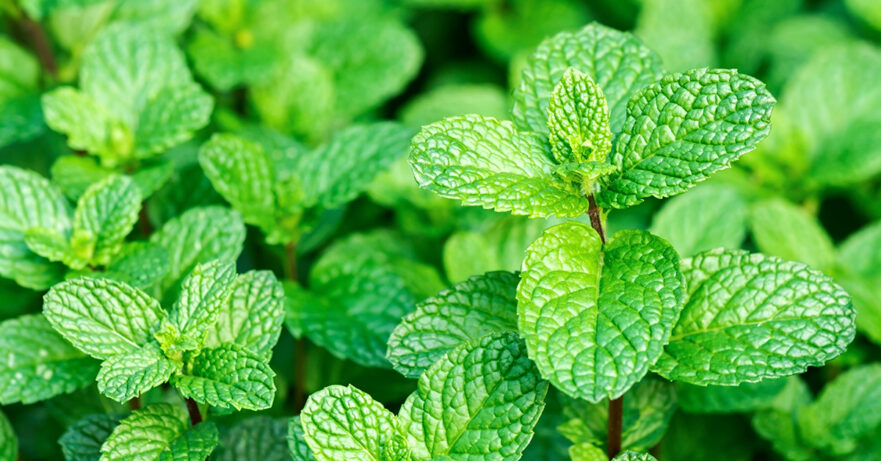In this monograph about peppermint:
📖 Introduction | 🌱 Botanical Description | 📜 Traditional Uses | 🔍 Phytochemistry | ✨ Applications and Uses | 🛡️ Safety Profile
📖 Introduction
Peppermint (Mentha × piperita) s a highly valued aromatic perennial herb in the mint family, Lamiaceae.
Renowned for its refreshing scent and cooling sensation, peppermint has been used extensively in herbal medicine, culinary applications, and as a fragrance in cosmetics. Its therapeutic properties are widely acknowledged across different cultures, making it a staple in traditional and modern herbal practices.
| English Name | Peppermint |
| Latin Name | Mentha × piperita |
| Parts Used | Aerial parts |
| Traditional Uses | Digestive issues, nausea, cold symptoms |
| Herbal Actions | Carminative, antispasmodic, analgesic, antiemetic |
🌱 Botanical Description
Scientific Classification
Mentha × piperita is a sterile hybrid between watermint (Mentha aquatica) and spearmint (Mentha spicata) and belongs to the Lamiaceae family.
Physical Characteristics
It features dark green leaves with serrated edges and purple-tinged stems, producing small purple flowers.
Natural Habitat and Cultivation Details
Peppermint, a hybrid mint variety, is not native to wild habitats but has been extensively cultivated. Originating from a cross between watermint and spearmint, it is now grown globally, favoring moist and shaded conditions. This herb proliferates through its rhizomes, adapting well to various environments outside its original range.
📜 Traditional Uses
Traditionally, peppermint has been utilized for its digestive benefits, including relieving indigestion, nausea, and abdominal pain. It is also known for its efficacy in alleviating symptoms of the common cold and headaches, owing to its cooling and analgesic effects.

🔍 Phytochemistry (Active Constituents)
Peppermint boasts a rich profile of active constituents, with menthol being the most prominent for its cooling sensation and therapeutic effects. Other key components include:
- Menthol: Provides a cooling sensation and acts as a mild analgesic.
- Menthone: Contributes to the herb’s characteristic aroma and possesses antiseptic properties.
- Flavonoids: Offer antioxidant benefits, supporting overall health.
- Triterpenes: Play a role in the herb’s anti-inflammatory and antiviral activities, enhancing its health benefits.
✨ Applications and Uses
Peppermint is recognized for its versatility in applications such as:
- Digestive aid: Peppermint oil, particularly when encapsulated, is clinically proven to ease irritable bowel syndrome (IBS) symptoms and has shown effectiveness in managing dyspepsia.
- Respiratory relief: Peppermint contains menthol, which can act as a decongestant, relieving colds and coughs by helping to clear the nasal passage.
- Pain management: Peppermint oil can significantly reduce tension headaches when applied topically in a diluted form. It may also temporarily relieve muscular aches, although its effectiveness can vary among individuals.
- Oral health: Peppermint is used in dental care products to freshen breath. Its antimicrobial properties may help inhibit bacterial growth, contributing to oral health.
The effectiveness of peppermint in these areas is attributed to its potent phytochemical composition, particularly menthol, which is responsible for most of its therapeutic actions.
🛡️ Safety Profile
Peppermint is generally safe when used in typical culinary or therapeutic doses.
However, peppermint oil should be used cautiously, as it can be irritant when applied undiluted to the skin.
Peppermint oil should also be avoided in cases of cholangitis, gallstones, and severe liver damage without prior consultation with a healthcare provider due to its potential to increase bile production.
Individuals with gastroesophageal reflux disease (GERD) or hiatal hernia should avoid peppermint, as it may exacerbate symptoms.
Pregnant or breastfeeding women are advised to use peppermint with caution and consult a healthcare provider due to limited research on its effects in these populations.
